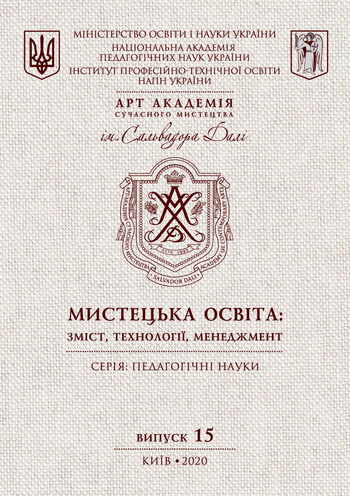THE COMBINATION OF THE ROMAN-GOTTIC AND ROMAN-IRELAND TRADITIONS IN THE MUSICAL CULTURE OF THE ROYAL RELEASE
Abstract
The article deals with the interweaving of two cultures on the territory of continental Europe after the barbarian conquest by the traditions of musical education in Visigothic Spain and the achievements in the formation of Irish monasteries, which were introduced by Alquin of York in the Empire of Charlemagne. Music in those days was considered as the highest mathematical discipline, which was only within the power of the most intelligent and capable students. The author of the article analyzes publications on this issue and highlights the plane that has not been sufficiently studied to date. Particular attention is paid to the need for education in early medieval European countries, to the importance of music among the “seven free arts”, to the timely emergence of metriz schools for the preparation of professional church singers, and to the birth of mass as a central part of worship, and the complication of the musical design of Christian chants. The emphasis is on the pedagogical ideas of Isidore of Seville and Alquin of York, methods of encouragement and punishment, forms of the educational processes organization in the episcopal and monastery schools of the early Middle Ages, which served as the foundation for the emergence of universities in Western Europe. The author of the article reveals a medieval understanding of music as a science and as an art, its components - organics, harmonics and rhythms, in the cited sources of that distant era, the instruments on which the students of the monastery and episcopal schools learned to play at the third level of education are analizing, and those semesters when they were engaged in music only have been highlighted. Considering the topic is wide, it’s not reserched enough for today and is not exhaust by those publications, that reveals it fractionally. Priority directions for investigation are considering to be: more detailed examination of medieval theory of music; the development of children`s voices in the middle age.
References
RGALI, f. 1345. Zbory rukopysiv pysʹmennykiv, vchenykh, hromadsʹkykh diyachiv 1669-1949 rr. op. 1. do 1-1124. op. 1. do 1-1124. od. khr. 412. Panteleymonov, S., 1830. Lektsiyi z istoriyi. [Lectures on History].
RGALI, f. 1345. Zbory rukopysiv pysʹmennykiv, vchenykh, hromadsʹkykh diyachiv 1669-1949 rr. op. 1. do 1-1124. op. 1. do 1-1124. od. khr. 464. Romanovsʹkyy, H. I. Filosofsʹki mirkuvannya pro dobrotu, yestvi, yednosti ta in. [Philosophical reasoning about kindness, nature, unity and other things] Avtor. [XVIII st.].
Bowen, J. A., 1981. History of Western education L. : Metthuen.
Chadwick, H., 1966. Early Christian thught and the classical tradition. Oxford University Press.
Churruca, J. De., 1973. Presupuestos para el estudio delas fuentes jurídicas de San Isidoro de Sevilla. AHDE 43.pp. 429–443.
Cohen, G., 1993. Englisch religions drama. L. : Magmillan.

This work is licensed under a Creative Commons Attribution-NonCommercial 4.0 International License.

